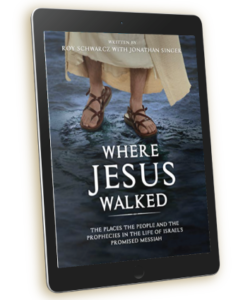Exodus 36:1-2 How we spend our time is one of the most important decisions we can make. All kinds of things compete for our attention: family, work, friendships, entertainment, religious activities and a myriad of other things. Sadly, many of us spend time on things that will not have eternal significance. It is amazing but the Lord has provided a way that our work will have an everlasting impact. The Shema (Heb. “hear” Deut 6:4) calls us to put God and His Kingdom first in our lives. This is the subject of our passage today.
In this chapter we see how God called skilled workers to build the Tabernacle, the dwelling of God among His people. The design had been given to Moses and passed on to these skilled managers and workers. How sad it would have been had these people not come forward to do the work. God back then and also today, is calling workers to be involved in the building of His Tabernacle today. The Tabernacle is built through the collective work of each of us. Each of God’s people have been given gifts and talents to be used in the building and bringing the Kingdom of God on earth as it is in heaven. We each need to acknowledge that our skills, talents and resources have come from God. Since they are gifts from Him, we are called to use them for His glory. “Every good thing given and every perfect gift is from above, coming down from the Father of lights (James 1:17).”
Exodus 36:3-7 Here we see that the hearts of the people were touched deeply as they gave willingly. There was a sense of excitement in being a part of something special. The offerings were brought by the people every morning. There was so much giving that there was call to end their giving. The workmen showed their integrity in not taking advantage of the generosity of the people to become wealthy themselves. They refused to profit off their work for the Lord.
Exodus 36:8-13 The inside covering was made of fine linen which pictured the purity and righteousness of God. This beautiful covering formed the inside walls and ceiling of the Tabernacle which was before the face of the priests as they ministered to the Lord in the Tabernacle. The material consisted of ten curtains of fine linen. Each curtain was 42 feet long by 6 feet wide. One group of five curtains was joined together to make one set and another five curtains made the second set. There were loops made of blue material along the edge of the curtains of the two sets, 50 loops per set. 50 gold clasps to hold the loops forming the interior of the Tabernacle (see illustrations in Chapters 26-27).
Exodus 36:14-19 Then came three outer coverings. The first were eleven curtains of goat hair. Each 45 feet long and 6 feet wide. Five were joined together to make one set and six more were joined together to make another set. Like the linen curtains they were joined together with 50 loops making one entire curtain. The second outer covering was made of ram skins dyed red. The third outer covering was made of leather, probably the skins of seals (Exodus 36:19). This covering was the top covering that protected all the other coverings, that safeguarded the Tabernacle and its furnishings from the weather and any other potential damage from the outside. This protective covering pictured a protective separation from the world.
Exodus 36:20-34 The frame of the Tabernacle provided stability and support for the curtains and outer coverings. The size of each framing board was 15 feet high by 2¼ feet wide. It was made with two pegs on each framing board for hooking to the base. Each framing board was to be made the same way (21-22). The workers made a frame of 20 boards, for the south side. This wall was supported by a foundation of 40 silver sockets or bases—two under each board (23-24). They then made an identical wall and then supported it in the same way as the south side (25-26). The west side had a wall frame of six boards which also included a framing post of two boards for each corner that were joined together at the bottom and joined together at the top, fitted into a single ring (27-29). For the west side, a total of eight board frames and a foundation of sixteen silver sockets were made, two under each board (30). They also made strong, durable crossbars: five for the south, five for the north, and five for the west walls (31-32). There was also a center crossbar that was made to run from end to end in the middle of the frames (33). Each one of the crossbars was covered with gold. Gold rings were made to hold the crossbars (34).
Exodus 36:35-36 Next in the construction came the inner veil that separated the Most Holy Place from the rest of the Tabernacle. Remember the Most Holy Place or Holy of Holies was where the Ark or throne of God sat. The veil shielded and separated the Ark of God of His presence, holiness and mercy from everything else. This symbolized God’s holiness and man’s separation from God. The veil was made of beautiful colored yarn and elegant linen. Skilled workers embroidered cherubim in the veil (35). There were four posts made of acacia wood and overlaid with gold as well as the the hooks which were made of gold as well (36). The bases or sockets: were made of silver (36).
This reminds us of the holiness of God and once again the reminder that the only way to approach Him is in His appointed way.


